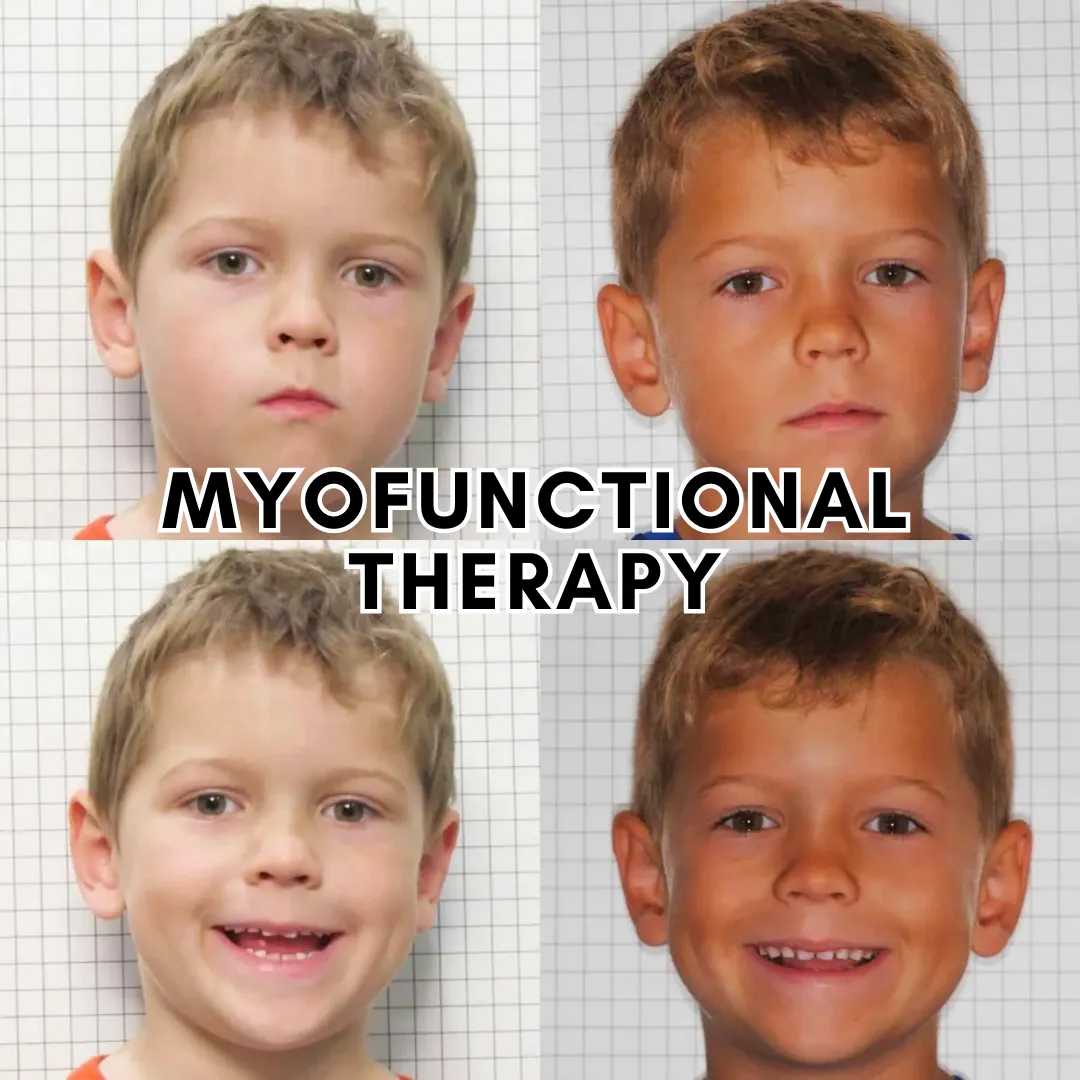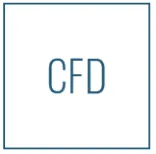Myofunctional Therapy
Introduction to Myofunctional Therapy
Myofunctional therapy is an approach to treating oral and facial muscles disorders. It's a non-invasive method that helps in correcting the tongue's position, improving breathing, swallowing, and speech. This therapy plays a crucial role in promoting better oral health and overall well-being. It can even help you better your digestion, improve posture, reduce snoring and sleep apnea, and eliminate jaw pain and headaches.
Myofunctional therapy effectively addresses a range of orofacial myofunctional disorders (OMDs), stemming from facial and mouth muscle dysfunctions.

When Might My Child Need Myofunctional Therapy?
Myofunctional therapy is ideal for kids (and adults!) facing challenges with tooth crowding, mouth breathing, improper swallow , and much more. It's suitable for all ages, offering a personalized approach to treat a variety of oral and facial muscle disorders effectively.
Tongue Position Diagnosis
We can diagnose the need for myofunctional therapy by observing the tongue's resting position. Ideally, the tongue's tip should be just behind the top front teeth, with the rest of the tongue lying up along the roof of the mouth. If the tongue rests at the bottom of the mouth, therapy may be required.
Tongue Resting Pattern
It's common to think the tongue is resting correctly with the tip behind the teeth. However, if it forms a U-shape or hangs downwards like a hammock, this could lead to crooked teeth.
Swallowing and Chewing Patterns
Correct swallowing involves the tongue pressing against the roof of the mouth. If it presses against the teeth, it can lead to tooth spacing, an open bite or teeth that don't touch. It can also lead to increased risk of ear infection.
Other indicators include:
- Infant Breastfeeding Difficulties: Aiding in latching and feeding issues.
- Bruxism Management: Providing solutions for teeth grinding.
- Snoring Reduction: Alleviating loud snoring.
- Sleep Apnea Therapy: Treating obstructive sleep apnea.
- Tongue and Lip Tie Solutions: Managing tethered oral tissues.
- Orthodontic Health: Correcting crooked teeth.
- Behavioral Modification: Helping with thumb sucking and nail biting.
- Posture Improvement: Addressing slouching and forward head posture.
- Swallowing Techniques: Improving swallowing difficulties.
- Breathing Normalization: Transitioning from mouth to nasal breathing.
This therapy offers a holistic approach to treating these conditions, emphasizing natural correction and overall well-being.
The Benefits of Myofunctional Therapy
Myofunctional therapy offers numerous benefits, including enhanced breathing, proper tongue position and effective swallowing techniques. It's particularly beneficial for children to maximize facial growth.
Myofunctional Therapy and Osteopathy: Supporting Orthodontic Success
Myofunctional Therapy involves specialized exercises to correct tongue and facial muscle dysfunctions, and improve nasal breathing. It requires parent and patient dedication for success. A myofunctional therapist addresses negative oral habits, supporting orthodontic efforts. Meanwhile, osteopathy, particularly Cranial Osteopathy, plays a crucial role in enhancing orthodontic outcomes. Osteopathic Manipulative Medicine (OMM) applies non-invasive manual treatments, assisting in effective and symmetric orthodontic changes.
What Is Myobrace?
The Myobrace system is a groundbreaking solution designed to correct poor oral habits that lead to dental and facial irregularities. It's an effective, non-invasive alternative to traditional braces, focusing on addressing the root cause of crooked teeth and promoting natural growth and alignment.
It unlocks natural growth and development. Treatment is best suited to children aged 3 to 15 and involves using a series of removable appliances that are worn for 1-2 hours each day plus overnight while sleeping.
The Process of Myofunctional Therapy
The myofunctional therapy process involves a comprehensive assessment followed by a tailored treatment plan. It includes specific exercises targeting the facial and oral muscles, gradually improving their function and strength under professional guidance.
The Myobrace system includes distinct phases tailored for different age groups:
Habit Correction Phase
Targeted at young children, this initial phase aims to rectify detrimental oral habits that could lead to future orthodontic issues.
Arch Development Phase
Intended for children with mixed dentition (both baby and adult teeth), this phase focuses on expanding the dental arch to accommodate the emerging adult teeth.
Dental Alignment Phase
Geared towards teenagers with predominantly adult teeth, this stage concentrates on the precise alignment and detailing of the teeth.
How Does Expansion Work With a Myobrace?
The Myobrace system facilitates expansion through several methods:
Arch Expansion
Utilizing Myobrace for just a few hours daily and during sleep gently expands the dental arches over time.
Muscular Training
It also focuses on strengthening the facial and mouth muscles to support proper jaw and arch development.
Natural Growth Utilization
By treating young patients, Myobrace leverages their natural growth for achieving expansion and alignment, potentially reducing the need for braces or extractions later.
Exercise Integration
Myobrace incorporates myofunctional exercises to enhance tongue position, breathing, and swallowing, aiding in arch development and alignment.
